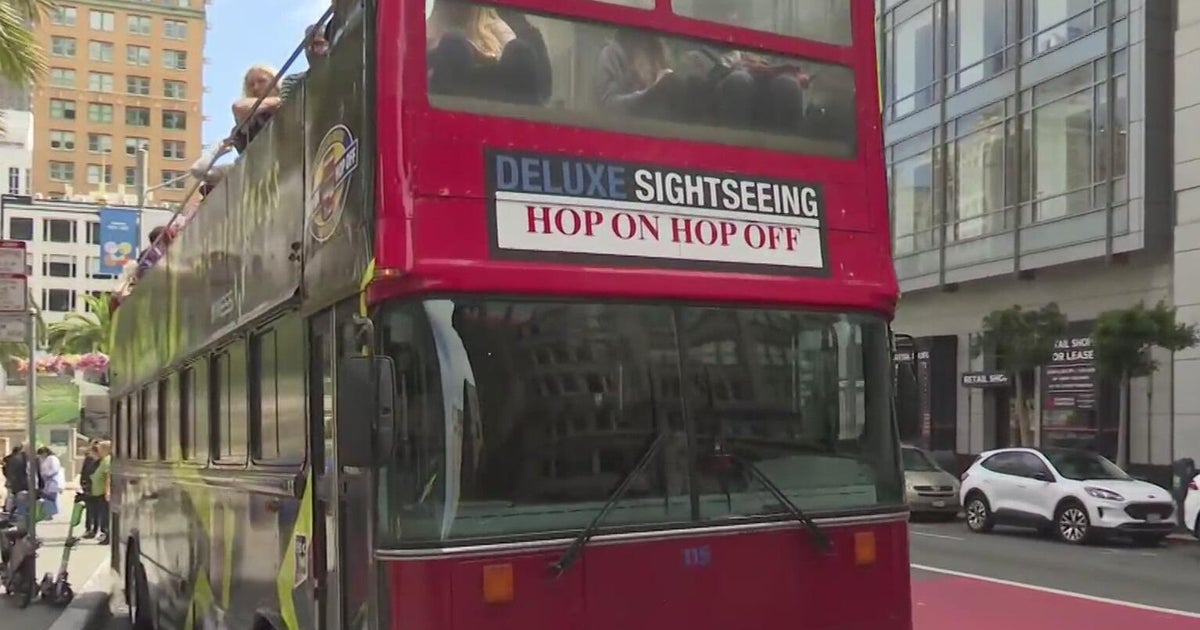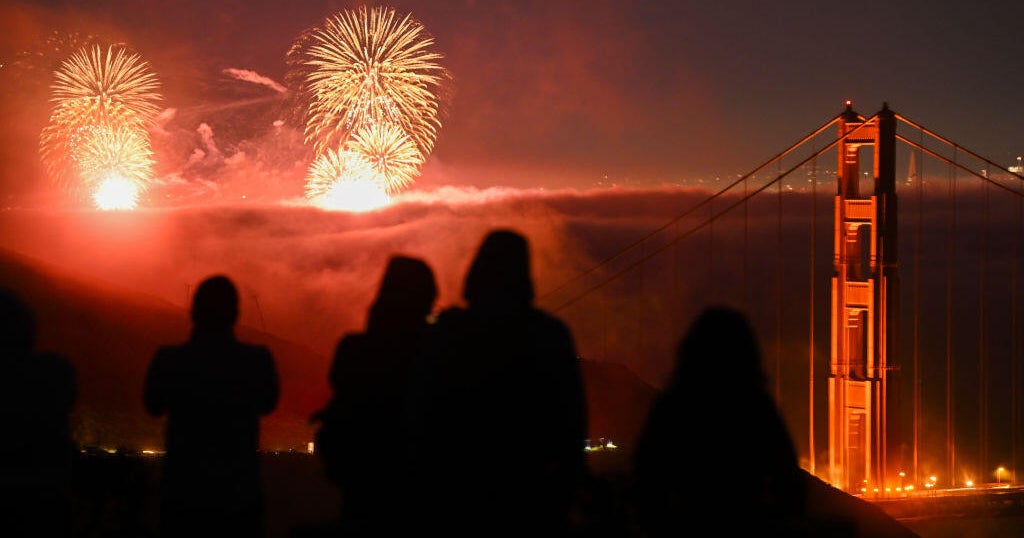KPIX 5 Special: The Heroes Of Flight 214
SAN FRANCISCO (KPIX 5) - Everyday people became heroes on July 6, 2013: the day Asiana Flight 214 crash landed at San Francisco International Airport. In the teeth of a tragedy, these individuals set aside their fears to rescue others, save lives, and prevent a catastrophe.
Passengers reported a smooth flight from Seoul, South Korea. It was a ten-hour journey without incident until the final seconds of the approach to SFO.
- The Landing -
"I was looking out through the window," remembered passenger Eugene Rah. "I saw the water right next to me before I saw the runway."
Almost 30 rows back, passenger Benjamin Levy saw the same thing.
"I realized quickly we were - it felt like 2 or 3 meters above, so maybe 10 feet above the water and we were not even on the runway," Levy explained. "I don't see any runway. I just see water. I'm realizing we're way to low, but I'm like, 'Eh, he's going to make it, he knows what he's doing.' Well that wasn't the case."
At 550 feet, the plane's speed dropped below the optimal level for landing a 777. According to the flight data recorders and crew interviews, the co-pilot realized the plane was too low and told the pilot to "pull back."
At 200 feet, red warning lights alerted the cockpit crew the plane is much too low. The co-pilot realized the auto-throttle wasn't maintaining the correct speed.
At 125 feet, the speed dropped further and the throttles moved forward. Just four seconds before impact, the controls began to shake - a warning that a stall is imminent.
With only one and a half seconds to impact, the pilot tried to abort the landing to make another pass. But it was too late. The tail of the plane hit the seawall and snapped off. Three flight attendants were ejected but survived. The body of the plane thumped to the ground, tipped, and skidded into the dry grass beside the runway.
-The Escape -
Inside the business class cabin, Rah fought panic.
"I was thinking, 'I'm dying!' Just one more second whether this plane is going to be flipped over or explode," he said.
"It was disbelief, screaming," Levy reported. "But I believe we managed to get everyone calmed down pretty quickly and really started getting out. No pushing each other, no stepping on each other, so it felt like it went really fast."
Levy said the stunned passengers were on their own. He pushed open the door and started shouting: "We're going to be ok! We're going to be ok! Get out! Get out!"
Up in the front cabin, Rah said a flight attendant activated the door and exit slide.
"She was in a great amount of fear of course, but she did a great job," Rah said.
Once outside, Rah helped lead people away from the wreckage. Levy stayed in the rear doorway, guiding people out - despite his own severe rib pain - and despite growing flames and smoke. He was still trying to help people who couldn't move when a flight attendant appeared from the front of the plane.
"She saw me there, she grabbed me and said, 'Get out of here!'" Levy remembered.
That flight attendant was the crew manager, 18-year veteran Yoon Hey Lee. She was in the front of the plane as it crash landed.
"We bumped hard, leaned to both sides, and stopped," Lee said later, speaking in her native Korean. "Then the emergency door popped from the first door on the right and popped inward."
She soon saw flames outside. Inside, the ceiling and overhead bins started to collapse. What Lee did not know was that three of her 12-person team had been ejected from the rear of the plane. Others were also injured, or trapped beneath the chutes that inflated inside the plane. She herself had a broken tailbone.
With smoke filling the cabin, Lee extinguished the flames and deflated the chutes with an ax. Benjamin Levy could hear from behind a wall.
"There was somebody running the 'sheep' in the front," he said. "She was literally taking care of a lot of people - yelling, organizing everybody, getting them out. And then she came and grabbed me and said, 'Get out through the front! Get out now!'"
With everyone out, and flames spreading, Lee came down the slide. She found SF Fire Chief Joanne Hayes-White.
"She was so composed," Hayes-White remembered. "I thought she was coming from the terminal. She came to me with a passenger list and I said, 'How did you get out here?' She said, "I came down the chute.' She did not want to go to the hospital. She was literally the last one off the plane. I was amazed by her bravery and she was a true hero."
-The Rescue -
By now, a new wave of heroes was arriving. Eventually more than 200 firefighters, police officers, and paramedics would swarm the jet to pull people to safety before the plane burned.
SFFD Lt. Crissy Emmons was assigned to the "Crash House" that day - an on-site fire station with a dark nickname that Emmons says really came true that day.
"The alert was struck and the communication from the tower was 'Alert 3! Alert 3! Plane crash! Plane crash!'" Emmons said. "It was a female that dispatched us and I knew from her voice that the event we were going to was real."
Across the airfield, SFFD Lt. Dave Monteverdi heard a similar call from the tower. He was already in his turn-out gear from a previous, less serious call. So he and a partner turned their attention immediately to the runway.
"All you could see across the airfield was dark smoke going up to the sky and you could see a plane was on its belly," Monteverdi reported. "So we rushed straight to it."
Assistant Chief Tom Siragusa was working at Station 3 in San Francisco's Mission District when his team got a call to assist the airport crews.
"A first response alarm was struck to the airport to provide assistance for what was indicated to us a plane crash and people on the plane were exiting via the chutes," Siragusa said.
He arrived within minutes to find there were still people trapped on the plane.
"We were in 'life mode' - to get onto the plane and to begin a rescue operation," he explained.
Lt. Emmons saw Lt. Monteverdi head up one of the emergency chutes into the plane. She and a partner followed.
"We encountered fire initially as we got into the fuselage which we knocked down just as a temporary state, just to give us more time," Emmons said. "We were not running out of time but the conditions were possibly going to change very rapidly for us."
Toward the rear of the aircraft, they encountered several passengers trapped by seats or debris. Emmons assisted in evacuating passengers through the hole left when the tail came off the jet. They strapped some survivors to backboards and carried others.
Lt. Monteverdi had checked the cockpit and front of the plane and then moved toward the back to assist.
"We saw one elderly gentleman in his seat who could not move," Monteverdi remembered. "He was groaning. We were running out of time. The smoke just kept getting thicker and thicker. We had no choice so we stood him up and amazingly he started shuffling his feet."
"The conditions inside the plane were changing very rapidly," Emmons added. "When we first got back there and saw these people, it was actually pretty clear back there. There was not a lot of smoke, there was not a lot of fire but by time we removed the final victim the conditions were that the fire was banking down on us - we had heavy black smoke. So I feel very lucky and blessed that we were able to get those people out in that time."
Monteverdi radioed command to report the initial search was complete. He moved into fighting the fire from the outside.
Emmons felt sure it was time to get out: "I was satisfied. I was happy. I felt like there was nobody left on that plane. I felt confident that the plane was gone through well and that we did not leave anybody there in that plane."
"Above and beyond is insufficient to say what they did," Assistant Chief Siragusa said later. "I couldn't be more proud of what they did."
When every second counts for saving lives, there was some good fortune that Flight 214 happened to crash right in front of a San Francisco Police officer. K-9 Unit Officer Jeff Brown was training his dog near the runway when the plane swept across the grass. He called an immediate alert.
Watch Commander Gaetano Caltagirone looked up from his desk and saw a cloud of brown dust. A minute later, he was in his patrol SUV, picking up officer Antonette Valenzuela. It was only her fourth day of airport duty.
Officer Jim Cunningham was already on scene with officer Derek Lee, passing their knives up to the flight crew to cut people out of their seatbelts.
"We turned around to our right and we saw that the gas was just pouring out of the airplane wing," Cunningham said. "We were trying to motion people that were there next to us to get out of the area. 'Cause a lot of people felt that once they were out of the airplane they were safe, outside the airplane. And they didn't realize it was a ticking time bomb."
"The first thing I really saw was was the rear of the plane, big hole in the rear of the plane," Valenzuela said.
Cunningham charged toward the back of the plane to move people away. Then he jumped up into the plane.
"I didn't think about the danger. I was more worried about the people inside," Cunningham said. "Because if I didn't get them out, then nobody else was gonna get 'em."
Cunningham ran into Lt. Emmons as they struggled to get the old and injured out as smoke poured in.
"It got to a point where it was so thick it was a thick black cloud comin' at you, swirlin' around," Cunningham said. "It looks like death is coming to get you."
They got the last passenger off, but Officer Cunningham went back in one more time to make sure.
"If we hadn't gotten those people out of there, they'd be dead right now."
The firefighters' and police officers' actions have inspired many to call them heroes.
"We keep repeating, we're not heroes," explained Caltagirone. "We're just doing our job."
That job isn't easy, even when the emergency has passed.
"Officers I spoke to the next day said they had trouble sleeping," Officer Valenzuela reported.
-The Medical Response-
Because the wreckage was smoldering and leaking fuel, first responders moved the injured passengers to a safe distance. There, teams began a field triage: quickly identifying the severity and types of injuries for each patient. The injured were then divided into three groups: red, yellow, and green, with red being the most severe.
The first wave was rushed to area hospitals. Doctors said those decisions made on the tarmac saved lives.
"I have to say whoever triaged these patients at the airport did a fabulous job because they got to us the sickest patients in the shortest period of time," said SF General Hospital Chief of Surgery Dr. Margaret Knudson. "Or I don't think those patients would have survived truly."
Trauma surgeon Dr. Geoffrey Manley concurred: "It was only through the expert care that they received in the field with having appropriate neck stabilization and inline stabilization of the spine they we didn't have more injuries then we've seen already."
Before they arrived at the crash scene, first responders knew only one fact: a plane had crashed. But as the situation began to unfold, those in charge sent color-coded alerts to the hospitals.
A yellow alert put hospitals on notice. A red alert let them know there would be injured patients on the way.
In emergency medicine, doctors and nurses prepare for the worst kinds of trauma. After years of disaster training and drills, they were ready. At least 14 Bay Area hospitals in four counties jumped in to help, treating nearly 200 patients.
At SF General, the hospital quickly activated its disaster plan. As the closest trauma center to the crash site, it got the most severely injured patients.
"You know we've had gang shootings. We've had multiple car accidents where we've had a large number of patients...but we've never had 25 ambulances en route to San Francisco General," Dr. Manley explained.
"I had four trauma teams ready to go," added Dr. Knudson. "I had five operating rooms ready and staffed. We were really well organized and everybody did their job perfectly."
Everyone pitched in, including supply manager Daisy Aguallo. She's in charge of everything from bandages to catheters. She rushed in on her day off.
"My first thought was that could be my family in that plane, " Aguallo explained. "I knew without the proper supplies, the nurses and the physicians could not treat their patients properly and I wanted to make sure the trauma team had everything they needed."
At Stanford Hospital, officials also jumped in, setting up a command center as well as a triage area outside the emergency room. Their last disaster drill had been just two weeks before.
"We had just done training for every nurse in the emergency department on triage," said Brandon Bond, Stanford Director of Emergency Management. "Everyone involved in that response that night is absolutely heroic."
That included those outside the medical staff, like social worker Rebecca Wixon.
"It was amazing and beautiful to see everyone working together," Wixon remembered.
Wixon connected patients to their anxious families, making long distance calls to worried relatives overseas. She also connected to the traumatized patients. It didn't matter that they spoke different languages.
"We didn't need to be able to communicate in words - just to be able to hold a hand, to take tissues and wipe away tears."
The other unsung heroes at the hospitals: those who came to donate blood, like Steve Kroner, who spoke to KPIX just after finishing the procedure.
"They were saying they needed as much and as soon as possible," Kroner said.
Following the crash, the Blood Centers of the Pacific and the Stanford Blood Center reported a jump in donations.
-The Lessons-
Many have called it a miracle that so few people died in the crash landing of Flight 214. Experts give credit to that good triage, and also to new construction standards for aircraft.
Passenger Benjamin Levy believes what saved so many lives was that there was no fire immediately. And experts say that's exactly right.
Kevin Hiatt with the Flight Safety Foundation says, as chilling as it may look now, the plane seats saved lives.
"You had a situation where we had flame retardant material not only in the seats but in the cabin, and that contributed to the fact that the cabin didn't light off as quickly," Hiatt explained. "Now with the new seats and the new fasteners and the stronger floors in the aircraft those seats now stay in place."
And believe it or not, he says new in-flight training videos make a big difference too.
"They've become a lot more interesting, as I would say, and the passenger seems to hold an interest in watching it, whereas before most of us had our newspaper in front of our face and we didn't really pay much attention."
Hiatt says the new construction standards were key to saving lives in the last three major commercial airline crashes: in Indonesia this past April, at London's Heathrow Airport in 2008, and at Toronto's Pearson International Airport in 2005. None of the more than 500 total passengers and crew died.
National Transportation Safety Board Chairman Deborah Hersman said the Asiana crash at SFO will lead to even more safety improvements.
"They have located the locations of the two fatalities. They are going to be working now to document the seating positions of those who were injured. We want to identify primary injury patterns, interview survivors, as well as conduct cabin crew interviews.
(Copyright 2013 by CBS San Francisco. All Rights Reserved. This material may not be published, broadcast, rewritten, or redistributed.)



